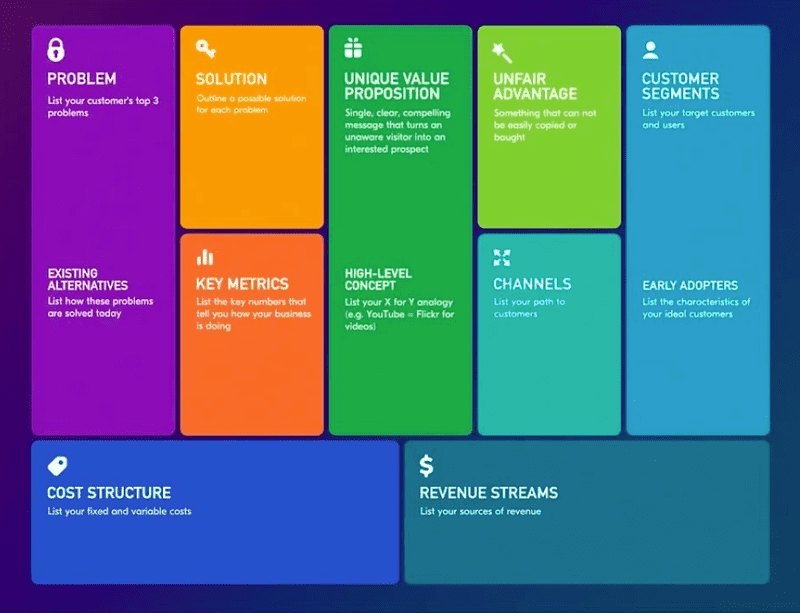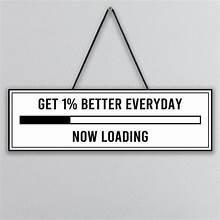
What is the Business Model Canvas?
Esseen tyyppi: Yksilöessee / 2 esseepistettä.
KIRJALÄHTEET
| KIRJA | KIRJAILIJA |
|---|---|
|
Business model generation : a handbook for visionaries, game changers, and challengers" |
Alexander Osterwalder |
Business Model Canvas
This essay is a quick and compact guide of why and how to use the Business Model Canvas; I remember the first time I heard about this tool, It was probably ten years ago when one of my friends showed me; he studied graphic design, and I was making my first party as an event organizer.
He explained how this tool works if you want to run a business or have a business idea and since then I have tried to use it as much as possible. From my previous experience, I highly recommend using this tool because it will help you save time, effort, and money.
What is the Business Model Canvas?
Alex Osterwalder, a Swiss business theorist, and entrepreneur invented the canvas as part of his Ph.D. research. The Model business canvas was elaborated in a book called Business Model Generation co-authored with his graduate supervisor Yves Pigneur, a Belgium computer scientist. The book’s Cover also says, co-created by an amazing crowd of 470 practitioners from 45 countries. The business model canvas is a strategic management template that helps business or business ideas describe, analyze, design, innovate, and visualize their business.
I love this canvas because everything is on one page, so you can see how your business works in every single area. The business canvas breaks your business mod into easily understandable segments or blocks: Key Partners, Key Activities, Key Resources, Value Propositions, Customer Relationships, Channels, Customers Segments, Cost Structure, Revenue Streams.
By digging into these elements of your business, you can recognize and act on areas that can be improved. It also reveals clear paths on which to build your business innovation strategy.
Getting a better understanding of your business never hurts. It helps you communicate your goals to your team. It helps with better communication with your clients about why they should do business with you. It helps you to get focus on what your business does and how it will continue to do it.

How to complete the Canvas?
There is no right way to complete the Canvas. But I like to start with the Value Proposition. But feel comfortable to find your way.
Value Proposition.
This block refers to your unique solution that your venture provides to your market customers. Your proposition should be unique and different from your competitors. If your product is new, your statement should be innovative. If your venture already exists in the market, your proposition should highlight unique features from what already exists.
Questions to ask:
- What problems do we solve for our customers?
- What customers need do we satisfy?
- Why do customers buy from us and not our competitors?
- What is unique about what we provide?
Suppose you want to have a stronger Value Proposition. In that case, I recommend using The Value Proposition Canvas, which helps to ensure that product or service is positioned around what the customer values and needs.
Customer Segments.
This block refers to your potential customers, the group of people, and companies you’re trying to reach to sell your product or service by creating customer segments. You categorize your audience in age, gender, location, interest, etc.
The organizations and people you provide products or services to contribute to your revenue streams fit here.
types of customers markets:
- Mass Market
- Niche Market
- Segmented
- diversified
- Multi-sided market
Questions to ask:
- Who are our most important current and potential customers?
- What do they need or want?
- How do they think and feel?
- What do they do?
Channels
This block refers to how your business and its products or services with customers. In other words, how you effectively reach the individual customer segment who buy your product or services.
What are your paths to your customers? A physical store, a webpage, app, delivery.
Questions to ask:
- Which channels can we reach our customers through, and what strategy should we deploy?
- How do we effectively promote, sell and deliver our value proposition?
- Which channels work best for each customer segment?
- Which channels are the most cost-effective?
Customer Relationship
This block refers to how your determinate the type of relationships your business will have with the customers. You need to identify the best way to engage with customers. These relationships can change according to your product or service.
There are three crucial stages in the business relationship with customers: getting new customers, encouraging customers to continue using the business service or product, and convincing customers to increase their use of the business.
Questions to ask:
- What relationships do our customers expect us to establish and maintain with them?
- How do we interact with potential customers throughout their buyer’s journey?
Revenue streams
This block refers to what is your monetization strategy for how your business or idea will make money. We need to specify the ways of payment by card, cash, or online.
How money comes into your business if you can generate other income ways, you should write them down.
Questions to ask:
- What are your customers willing to pay for?
- How much are they willing to pay?
- How do they prefer to pay?
- How much does each revenue stream contribute to the overall total?
Key Resources
This block refers to everything required for your business model to succeed and your value proposition to be delivered.
Your resources allow your business to create and offer a Value Proposition, reach markets, maintain relationships with Customer Segments and earn Revenues.
Key Resources can be physical, financial, intellectual, or human.
Key resources can be owned or leased by the company or acquired from Key Partners.
Questions to ask:
- What assets give your business a competitive edge?
- What key resources do you require to provide your value proposition?
- What resources are most important for effective distribution channels, customer relationships, and developing revenue streams?
Key Activities
This block refers to, what are the things we need to do to operate our business?
These are the essential actions your business must perform to operate successfully. Like Key Resources, they must create and offer a Value Proposition, reach markets, maintain Customer Relationships, and earn Revenues.
Types of key Activities
- Production: delivering, manufacturing, and designing a product in substantial quantities or superior quality.
- Problem Solving: Finding alternative solutions to problems faced by your target market.
- Platform/networking: creating and maintaining platforms.
Key Partners
This block refers to the people and companies you’ll need to work with to run your business, external people, and organizations that support your business.
Partnerships, suppliers, and joint ventures fit into this segment.
Establishing a network of key partners early on and building solid relationships with them will ensure consistency for your business.
Types of Key Partners
- Optimization and economy of scale
- Acquisition of particular resources and activities
Questions to ask:
- Who are your key partners/suppliers?
- Who will help you and why?
- What activities can be outsourced so your business can focus on core activities?
Cost Structure
If you are reading this means, you read everything and want to tell you congratulations you did until the end of the model canvas.
This block is the last step and the crucial one. What are the costs you need to pay to operate the business?
Don’t forget to evaluate the costs of creating and delivering value propositions, maintaining customer relationships, and generating revenue streams.
Questions to ask:
- What are the major cost drivers for our business, and how are they linked to our value proposition’s revenue and delivery?
- Which key resources and activities are most expensive?
- Are costs fixed or variable?
- How will costs rise as we grow?
I hope you found this information very valuable. I believe every entrepreneur needs to know how to use this tool very well because if the business needs to have some changes or innovations, they need to see how that innovation affects the rest of the blocks.
some important points we should consider are:
this one-page map is not business is not a business plan.
If you already have a business running and never apply this tool, please encourage you to apply to your business. It will help you see in order your business and maybe see some small things that can be fixed.
This tool will help you innovate your business when you need it and add new products or services to your customers. How much will be cost? If you want to expand to other customers segment, this tool will help you see where they are and create new channels to deliver your product or service.
It is an excellent tool if you are working in a team because every team member will know what is about the business, the value proposition, who your customer is, how the company makes revenue? And how much it costs to run the company? Please print the template in a format and nail it on your office wall. So every team member sees this and they can apport new ideas to develop the plan.
References:
Osterwalder, A., Pigneur, Y., In Clark, T., & Smith, A. (2010). Business model generation: A handbook for visionaries, game-changers, and challengers.
Download the Business Model Canvas here:
https://www.strategyzer.com/canvas/business-model-canvas



